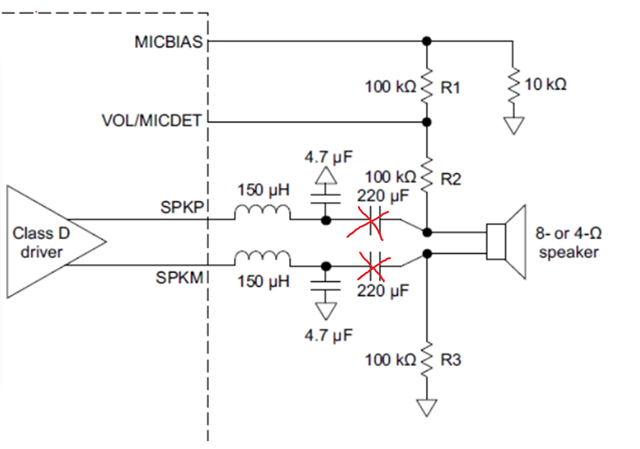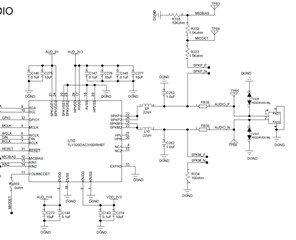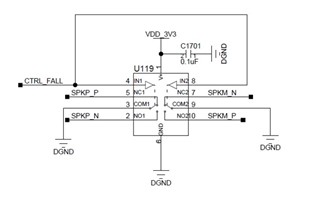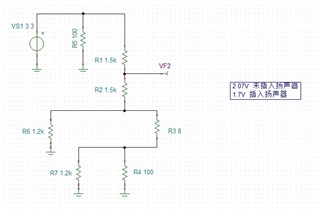Tool/software:
Hi Team
We follow the application to design speaker open load detect circuit.
The key to circuit functionality is that the Class D amplifier output of the DAC3100 chip can be configured as a high-impedance state so that the external circuit can determine the speaker status by dividing the voltage.
So I would like to ask, when I power down the class D amplifier, can I configure the output to a high impedance ? Or what is the way to configure the output to a high impedance state?
Thank you very much.






